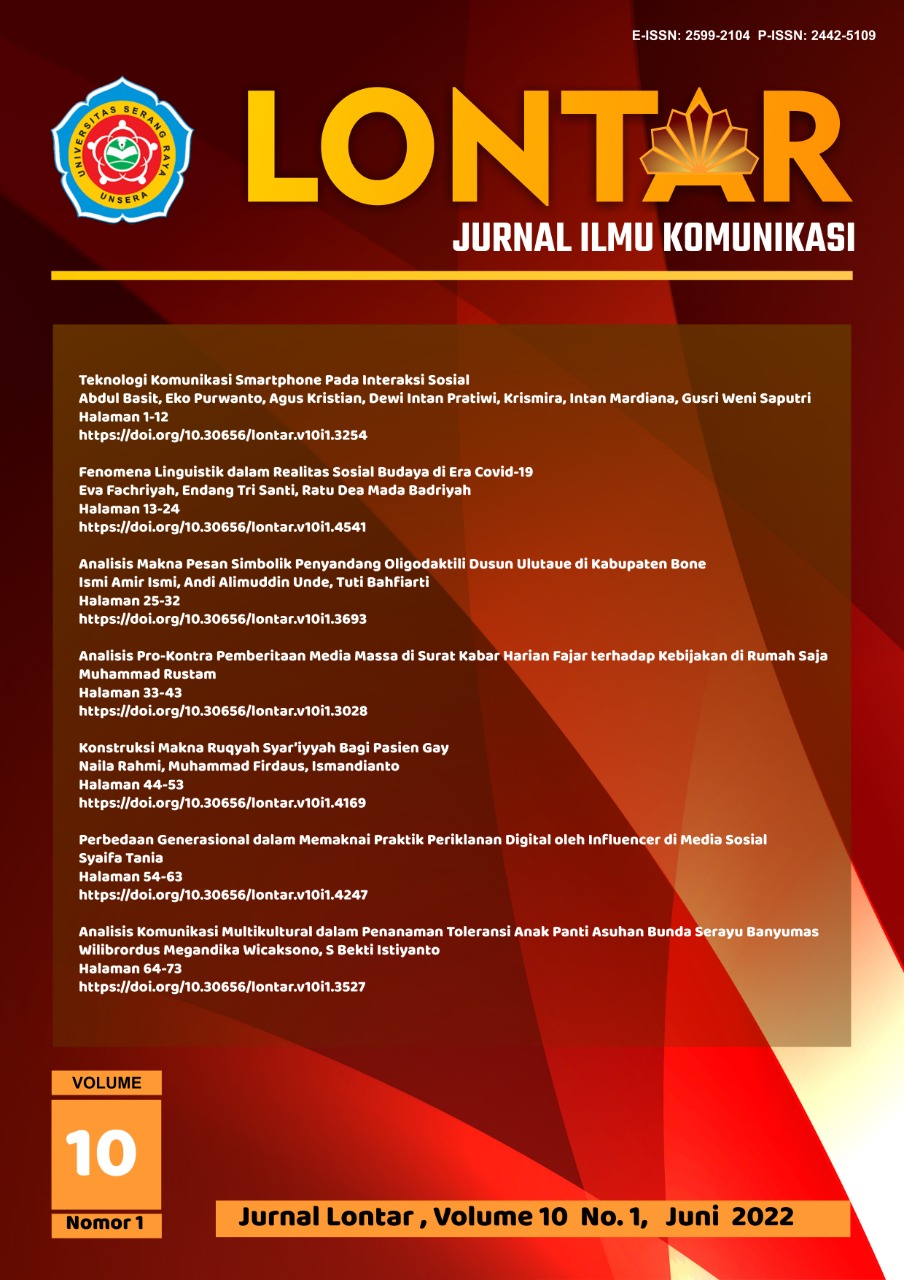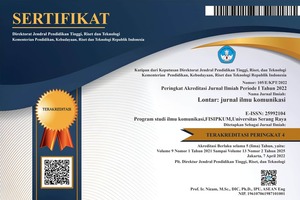Perbedaan Generasional dalam Memaknai Praktik Periklanan Digital oleh Influencer di Media Sosial
DOI:
https://doi.org/10.30656/lontar.v10i1.4247Keywords:
influencer, generational marketing, generational gap, digital advertisingAbstract
The Y and Z generation is currently the two generations who lives side by side and considered possess higher characteristics compared to the older generations. In terms of technology, although both are considered as digital natives, but they shared different socio-technological context. The Y generation experienced technological adaptation process of the transition of analogue to digital technology. Hence, the Z generation do not share the same experiences. In terms of marketing communication, this condition affects their way of responding digital advertising practice, especially done by the influencer. This research is aimed to explore generational gap between two generations in interpreting the practice of digital advertising shared by social media influencer by using case study method. The result shows existing differences related to the type of the preferred media and their construction of ideal figures of the social media influencers. It shows that the considered similar characteristics between two generations does not entirely correct. The difference lies in their perspective of influencer realness in terms of their personality and persuasive information. Understanding the difference perspectives between two generations leads to the consideration of the future mutigenerational marketing communication approach.
References
BBC News Indonesia. (2017, Desember 20). Inikah saatnya kita berhenti gunakan sebutan ‘milenial’?. BBC News Indonesia. Terarsip di: https://www.bbc.com/indonesia/vert-cap-42396460
Carr, T. (2020, Maret 13). How gen z, millennials & boomers really feel about online ads. Criteo. Terarsip di: https://www.criteo.com/blog/genz-millennials-boomers-online-advertising/
Chaney, D., Touzani, M., & Slimane, K. (2017). Marketing to the (new) generations: Summary and perspectives. Journal of Strategic Marketing, 25:3, pp. 179-189.
Childers, Courtney and Boatwright, Brandon. (2020). “Do digital natives recognize digital influence? Generational differences and understanding of social media influencersâ€. Journal of Current Issues&Research in Advertising, DOI: 10.1080/10641734.2020.1830893. pp. 1-18.
Dewi, R., & Janitra, P. (2018). Dramaturgi dalam media sosial: Second account di Instagram sebagai Alter Ego. Jurnal Ilmu Komunikasi, pp. 340-347.
Eastman, J., & Liu, J. (2012). The impact of generational cohorts on status consumption: An exploratory look at generational cohort and demographics on status consumption. Journal of Consumer Marketing, 29, pp. 93-102.
Gajanova, L., Majerova, J., Nadanyiova, M. (2020). The impact of influencers on the decision-making process regarding the purchase of the brand product. Business, Management, and Education, Vol.18, No. 2, pp. 282-293.
Hapsari, N. (2020). Influencer dalam Membangun Brand Knowledge Rebranding (Pengaruh Akun Media Sosial Beauty Influencer terhadap Brand Knowledge Rebranding PIXY). Yogyakarta: Universitas Gadjah Mada.
Jin, S., Muqaddam, A., & Ryu, E. (2019). Instafamous and social media influencer marketing. Marketing Intelligence & Planning, Vol. 37, No. 5, pp. 567-579.
Kantar Millward Brown. (2017). AdReaction Gen X, Y, and Z. Retrieved from Kantar: https://www.mm.be/userfiles/media/Kantar_Millward_Brown_AdReaction_GenXYZ_Global%20(2).pdf
McCormick, K. (2016). Celebrity endorsements: Influence of a product-endorser match on Millennials attitudes and purchase intentions. Journal of Retailing and Consumer Services, 32, pp. 39-45.
Purwaningtyas, M., & Alicya, D. (2020). The fragmented self: Having multiple accounts in Instagram usage practice among Indonesian Youth. Jurnal Media dan Komunikasi Indonesia, 1, pp. 171-182.
Shimp, T., Andrews, J.C. (2013). Advertising, Promotion, and Other Aspects of Integrated Marketing Communications. Cengage Learning.
Speier, K. (2016, 10 Juni). Why are Marketers So Obsessed with Millennials?. Social Media Today. Terarsip di: https://www.socialmediatoday.com/marketing/why-are-marketers-so-obsessed-millennials.
Tania, S. (2020). Women Social Media Influencer: Literasi Periklanan dalam Praktik Periklanan Digital. Dalam Rahayu (Ed). Perempuan dan Literasi Digital: Antara Problem, Hambatan, dan Arah Pemberdayaan. Yogyakarta: Gadjah Mada University Press. Hal. 171-196.
Williams, K., & Page, R. (2011). Marketing to the generations. Journal of Behavioral Studies in Business, 1-17.
Downloads
Published
Issue
Section
License
By submitting an article to the journal, the author(s) agree to transfer the published article's copyright to the journal, which will act as the publisher. This means the journal will have the right to publish the article in various forms, including reprints. The journal will maintain the publishing rights to the published articles.
In line with the license, authors and third parties (readers, researchers, and others) are allowed to share and adapt the material. In addition, the material must be given appropriate credit, provided with a link to the license, and indicated if changes were made. If authors remix, transform, or build upon the material, authors must distribute their contributions under the same license as the original.






